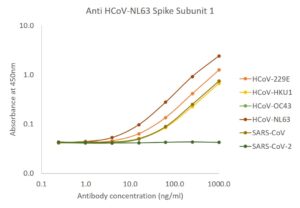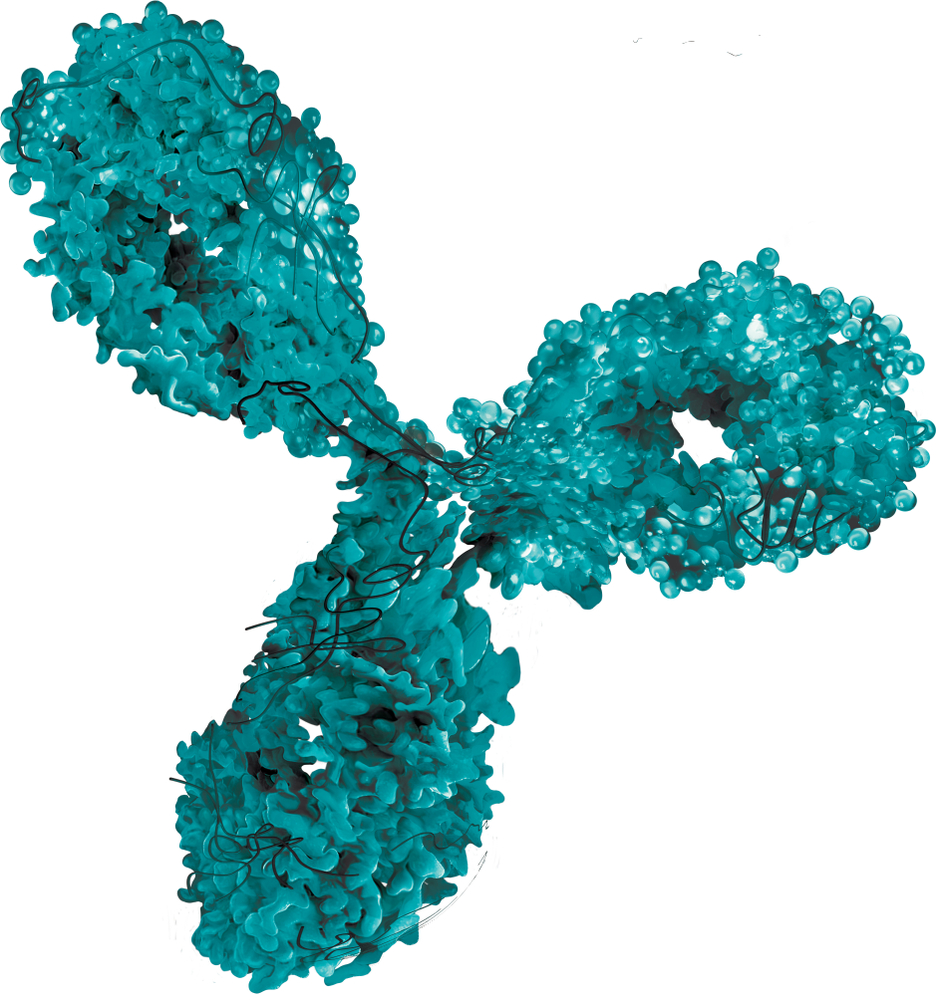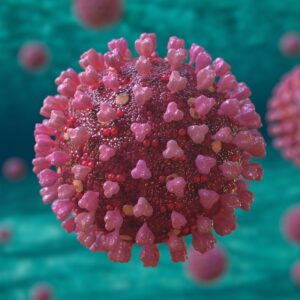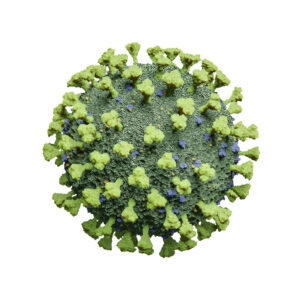
ELISA: Antigen-down ELISA with HCoV-229E (REC31895), HCoV-HKU1 (REC31897), HCoV-OC43 (REC31894), HCoV-NL63 (REC31896), SARS-CoV (REC31809) and SARS-CoV-2 (REC31806) spike subunit 1 proteins coated at 0.5µg. Primary antibody dilutions (1000 ng/ml to 0.24 ng/ml) added and 100µl of goat anti rabbit IgG HRP secondary antibody (1:10,000). Detection carried out using TMB substrate (15 min.), reaction stopped and absorbance read at 405/450nm.
Rabbit IgG Anti HCoV-NL63 Spike (S1) Polyclonal Antibody
Price range: $668.45 through $2,074.73 excl. VAT
Polyclonal antibody against human coronavirus NL63 spike subunit 1 (S1) protein. Antibody does not cross-react with SARS-CoV-2 spike subunit 1. Suitable for use in ELISA and other immunoassay development.
RABBIT IgG ANTI HCOV-NL63 SPIKE (S1) POLYCLONAL ANTIBODY
Polyclonal antibody against human coronavirus NL63 (HCoV-NL63) spike subunit 1 (S1). It shows some cross-reactivity towards other HCoV spike subunit 1 (S1) proteins and SARS-CoV S1 in ELISA, but not to SARS-CoV-2 S1 protein.
PRODUCT DETAILS – RABBIT IgG ANTI HCOV-NL63 SPIKE (S1) POLYCLONAL ANTIBODY
- HCoV-NL63 polyclonal antibody binds the S1 domain of the human coronavirus NL63 spike subunit 1.
- This antibody was made by immunising rabbits with a recombinant HCoV-NL63 spike subunit 1 antigen (REC31896).
- Protein A affinity purified from culture supernatant.
- Suitable for use in ELISA.
BACKGROUND
The coronaviruses are a family of related RNA viruses within the order Nidovirales. They contain a positive-sense, single-stranded, 26-32kb RNA genome protected by a nucleocapsid of helical symmetry. Their viral capsids are surrounded by a lipid envelope, which is interrupted by trimeric Spike proteins that project from the capsid surface. Human coronavirus NL63 (HCoV-NL63) is a species of alphacoronavirus that was first identified in 2004 in a seven-month-old child in the Netherlands (Van der Hoek, 2004). HCoV-NL63 infection has since been confirmed worldwide and is associated with many common symptoms and diseases, such as moderate upper respiratory tract infections, severe lower respiratory tract infection, croup and bronchiolitis. The virus is found primarily in young children, the elderly, and immunocompromised patients with acute respiratory illness. It also has a seasonal association in temperate climates. Like the other mild cold-causing human coronaviruses, HCoV-229E, HCoV-OC43 and HCoV-HKU1, HCoV-NL63 has a worldwide distribution, with seasonal surges occurring in the winter months (Wat et al., 2004). Like the other cold-causing coronaviruses, reinfection with HCoV-NL63 is common. The reason for this is not yet clearly defined but may be due to a weak antibody response (Raoult et al., 2020).
REFERENCES
- Raoult, D. et al. (2020). Coronavirus infections: Epidemiological, clinical and immunological features and hypotheses. Cell Stress.
- Van der Hoek, L. et al. (2004). Identification of a New Human Coronavirus. Nature Medicine. 10(4): 368-373.
- Wat, D. et al. (2004). The Common Cold: A Review of the Literature. European Journal of Internal Medicine. 15(2): 79-88.



